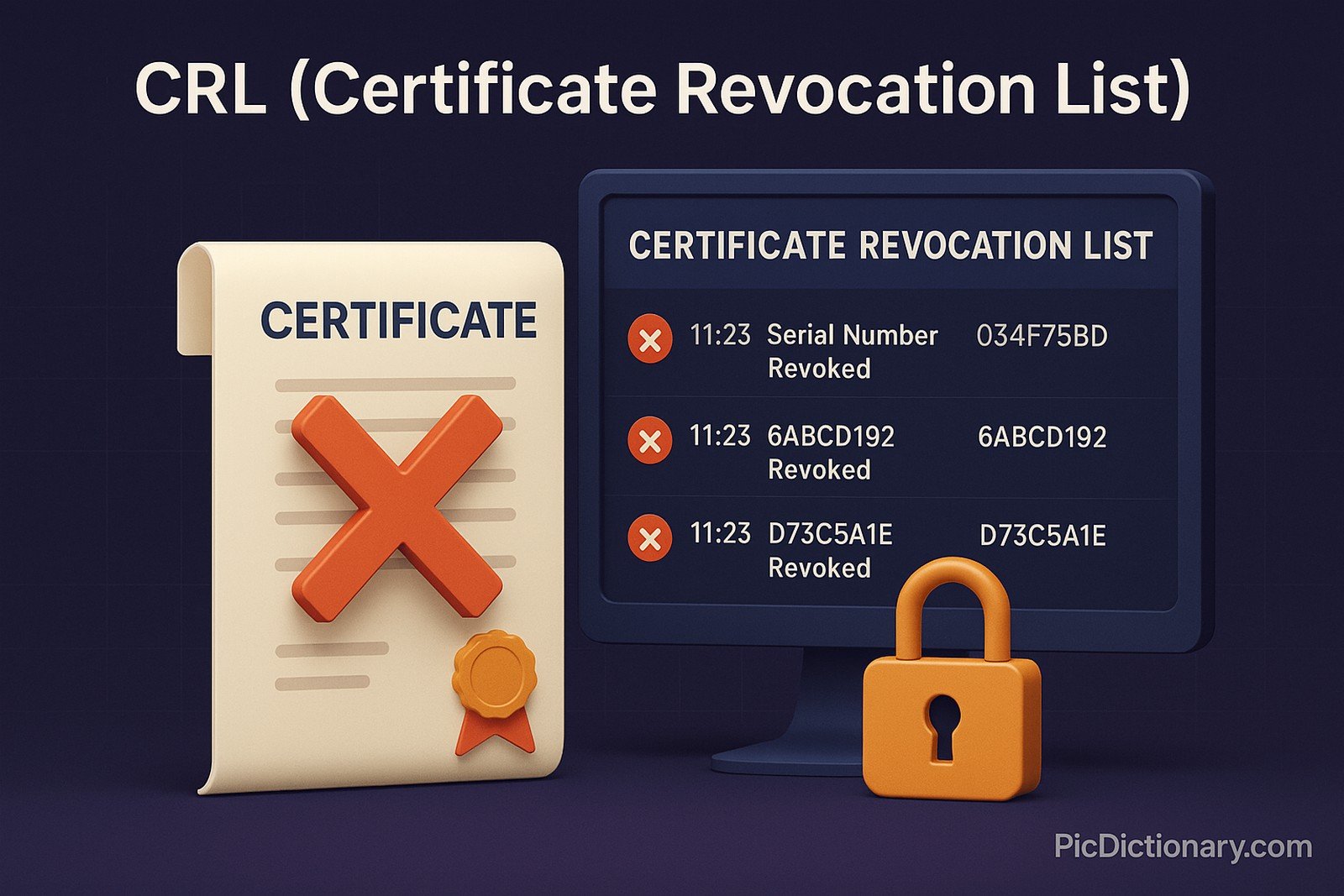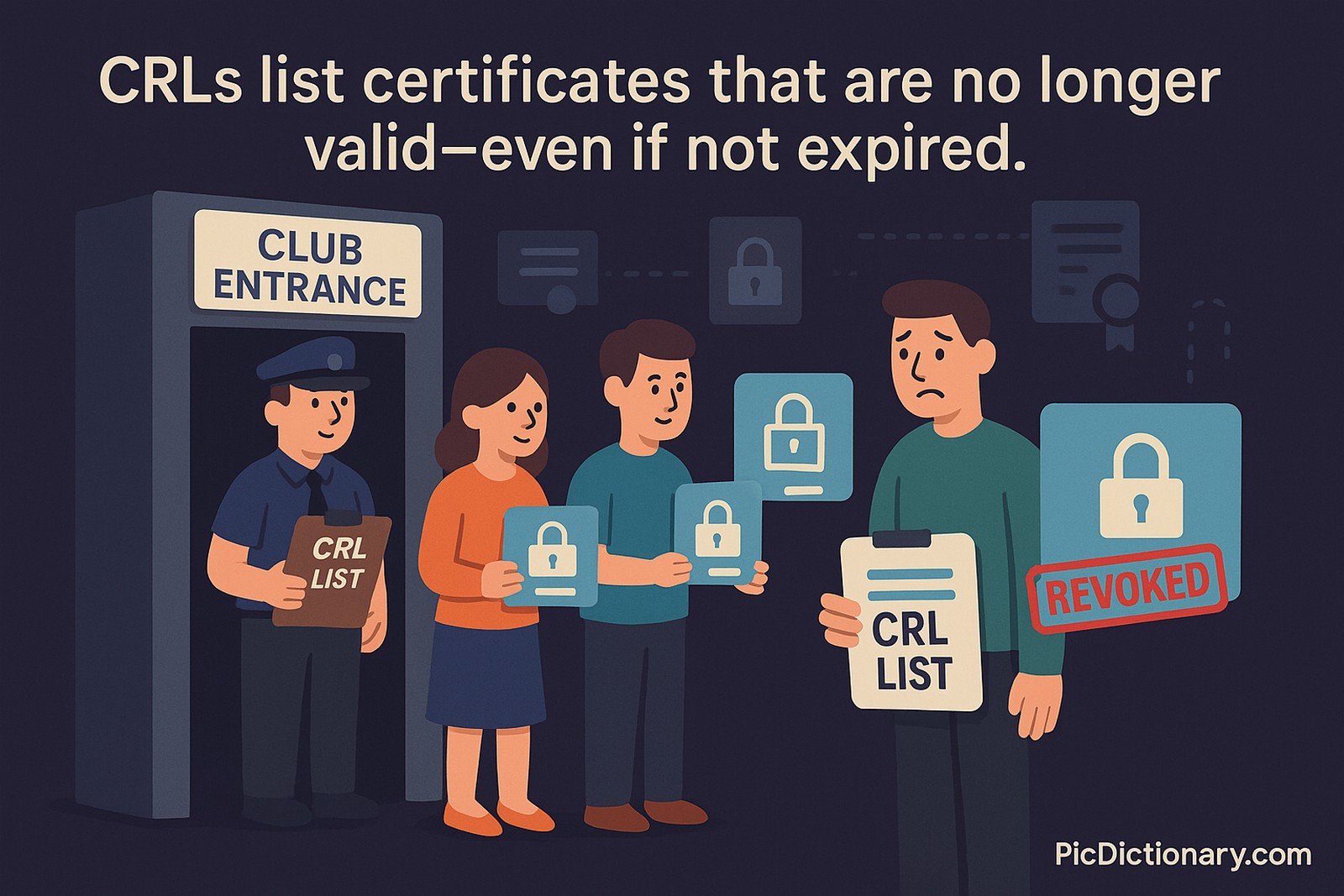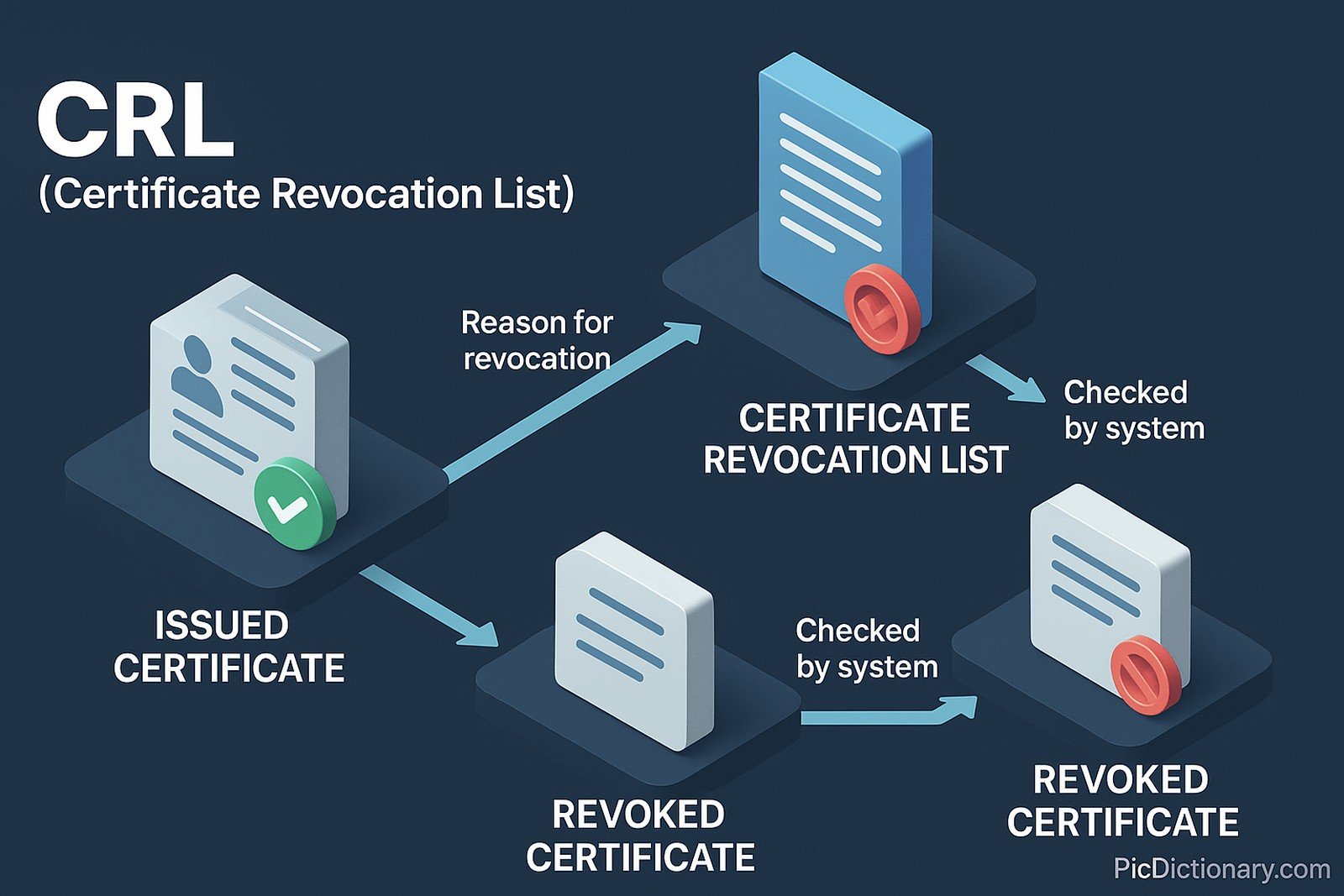CRL (Certificate Revocation List)

Quick Navigation:
- CRL Definition
- CRL Explained Easy
- CRL Origin
- CRL Etymology
- CRL Usage Trends
- CRL Usage
- CRL Examples in Context
- CRL FAQ
- CRL Related Words
CRL Definition
A Certificate Revocation List (CRL) is a list maintained by certificate authorities that contains digital certificates that have been revoked and should no longer be trusted. These certificates are invalidated before their scheduled expiration for reasons like key compromise, unauthorized issuance, or changes in the certificate holder’s status. CRLs are periodically published and used by systems to verify the status of digital certificates in secure communications.
CRL Explained Easy
Imagine having a list of people who are no longer allowed into a club because they broke the rules. Even though they once had a membership card, that card is now invalid. CRLs work the same way for digital certificates; they show which certificates are no longer trustworthy, even if they haven't expired yet.
CRL Origin
The concept of CRLs originated in the early days of public key infrastructure (PKI), as a way for certificate authorities to manage and communicate the status of revoked digital certificates.
CRL Etymology
The term "revocation" refers to the official cancellation of something, while "list" indicates a catalog or record of such cancellations.
CRL Usage Trends
With the rise of secure web communications and digital signatures, the use of CRLs has expanded. However, newer technologies like Online Certificate Status Protocol (OCSP) are increasingly used for real-time certificate status checking, reducing reliance on static CRLs.
CRL Usage
- Formal/Technical Tagging:
- Public Key Infrastructure (PKI)
- Digital Certificates
- Cybersecurity - Typical Collocations:
- "CRL update"
- "certificate revocation list distribution"
- "check the CRL"
- "CRL validation process"
CRL Examples in Context
- Before establishing a secure connection, browsers check the CRL to ensure the certificate has not been revoked.
- Email encryption tools consult the CRL to avoid using invalid certificates for secure communication.
- Corporate networks periodically download the latest CRL to maintain trust in their security systems.
CRL FAQ
- What is a CRL?
A CRL is a list of digital certificates that have been revoked and are no longer valid. - Why do certificates get added to the CRL?
Certificates are added due to security breaches, compromise, or administrative changes. - How often is the CRL updated?
Updates can range from hourly to weekly, depending on the issuing certificate authority. - What happens if a revoked certificate is used?
Systems will reject the certificate, warning that it is not trusted. - Can I manually check a CRL?
Yes, CRLs are public files published by certificate authorities. - What is the difference between CRL and OCSP?
CRL is a static list, while OCSP allows real-time certificate status checking. - Is using CRL enough for certificate validation?
CRL checks are useful but increasingly supplemented by OCSP for faster results. - Where are CRLs stored?
CRLs are stored on certificate authority servers and mirrored across distribution points. - Do CRLs expire?
Yes, they have validity periods and must be updated regularly. - Is CRL checking automatic?
Yes, most modern systems automatically check CRLs when verifying certificates.

CRL Related Words
- Categories/Topics:
- Public Key Infrastructure
- Digital Certificates
- Cybersecurity
Did you know?
In 2001, a major incident occurred when a large certificate authority mistakenly issued certificates to unauthorized entities. The quick revocation and update of the CRL helped prevent large-scale security breaches, showcasing the importance of maintaining up-to-date CRLs.
PicDictionary.com is an online dictionary in pictures. If you have questions or suggestions, please reach out to us on WhatsApp or Twitter.Authors | Arjun Vishnu | @ArjunAndVishnu

I am Vishnu. I like AI, Linux, Single Board Computers, and Cloud Computing. I create the web & video content, and I also write for popular websites.
My younger brother, Arjun handles image & video editing. Together, we run a YouTube Channel that's focused on reviewing gadgets and explaining technology.



Comments powered by CComment